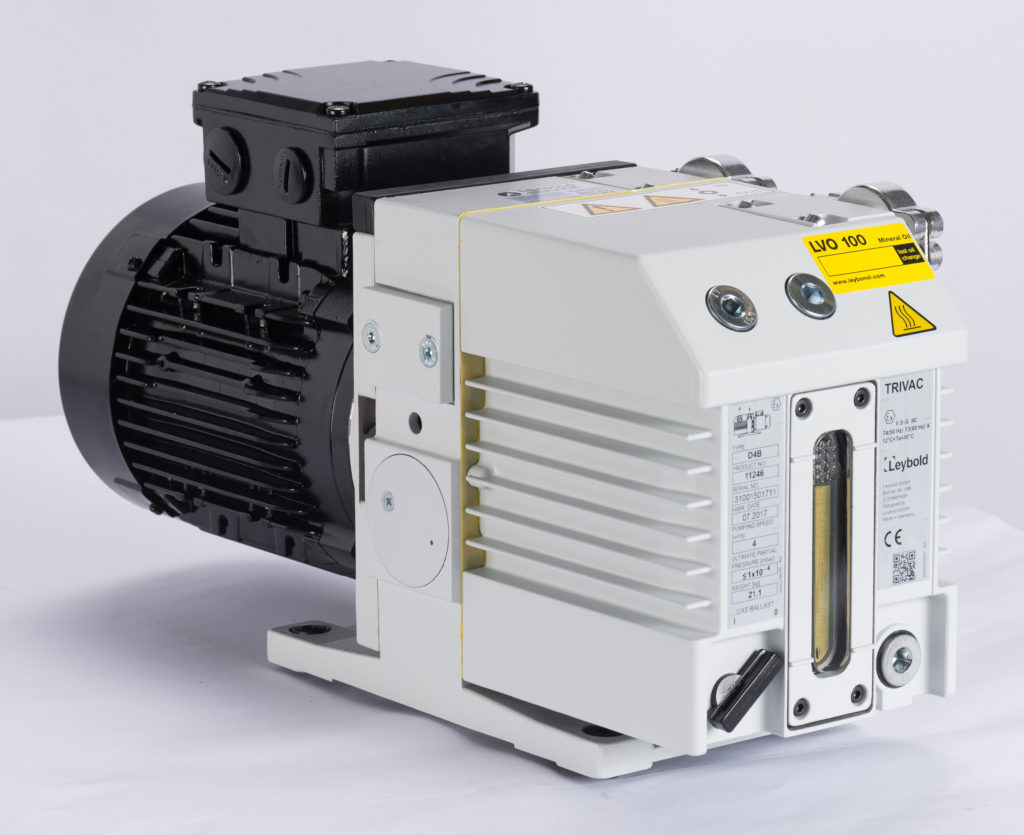Oil sealed vacuum pumps
Oil-sealed vacuum pumps
The oil-sealed vacuum pumps are the principle that many recognize as they have existed in industry as well as in research and development industries.
The pumps are available in slightly different models and designs depending on the requirements of their vacuum pump.
Sometimes there is a need to pump chemical compounds, liquids or gases that can be corrosive. In some cases, clean gases are pumped where you want to try to recycle the clean gas after system use. Most often you need to evacuate a certain volume at a certain time and the medium being pumped is the usual gas mix from the air.
If you do not find what you are looking for in our range (below), do not hesitate to contact us, as we do not have the opportunity to publish everything on the website.

Oil-sealed slat pump
The oil-sealed rotary vane vacuum pump is among the most common pump types available.
It is found in heavy manufacturing industries, in industries that make electronics,
in the food industry and also in research and development at companies or
educational institutions around the world. The pump itself is relatively robust and can handle many processes, which is probably why it is such a well-used and popular product throughout the world.
The pump principle is that by means of an electric motor, a shaft rotates through one or two compression steps. On the shaft there is a rotor with slats which, by means of centrifugal force from the motor, throws the slats against the inner wall of the pump chamber. The shaft is sometimes also displaced in the z-axis from the center, which forces the slats to move evenly over the internal wall of the pump chamber in an eccentric motion instead. When the blade comes into contact with the oil film that is inside the wall of the pump chamber, this creates a sealing and simultaneously lubricating layer. In the rotary movement of the slats, gas is carried from the inlet hole through the pump chamber to the outlet hole of the pump chamber (alternatively to a second compression stage). In cases where shaft and slats are eccentrically mounted, the technology is used to change the volume while compressing the gas. This increases the compression possibilities because both the volume change and the tight rotating constant movement of the slats are taken in the same direction. At the outlet of the pump chamber there are leaf valves which make it impossible for the gas that has passed to not recover, the principle is the same as in a check valve. In this way, compression of gas and a differential pressure is created between the suction flange and the exhaust flange on the pump.
The differential pressure then creates a flow from the system because the pressure always wants to be the same in everywhere
and want to level out in the existing volume. Because the compression does not slow down but continues until then
that the motor on the pump is switched off, therefore, the differential pressure will change continuously until the pump can no longer generate more differential pressure. When this occurs is different depending on the pump model; this is also called ultimate final pressure, which is the lowest possible pressure that the pump can produce.
The modern oil-lubricated lamella vacuum pump is capable of generating an ultimate final pressure from about 5E10-1 to ~ E10-3 mbar, depending on the conditions of the system.
In most cases it is available in many different models and designs that suit many applications, of course they are also available in ATEX versions.
Low2High Vacuum markets, performs service and renovates the two most commonly used pump types. They are available individually in varying sizes; Sogevac which is a 1-step compressive pump and Trivac which is a 2-step compressive pump. Both are reliable products, each with unique characteristics suitable for different applications.
